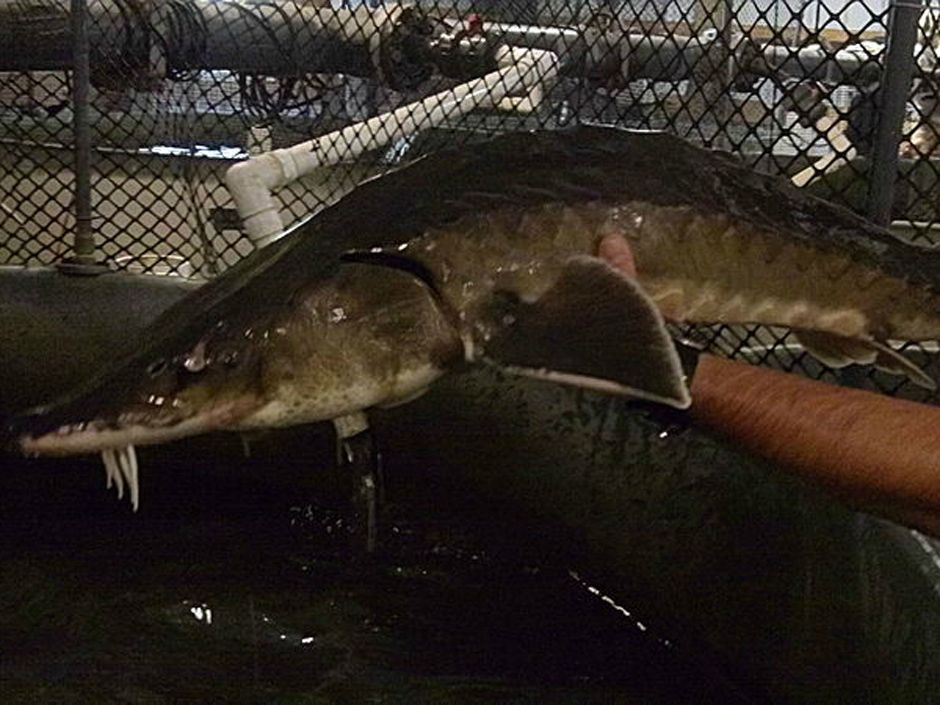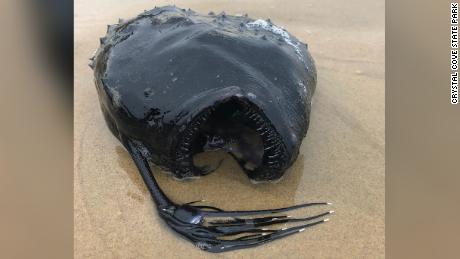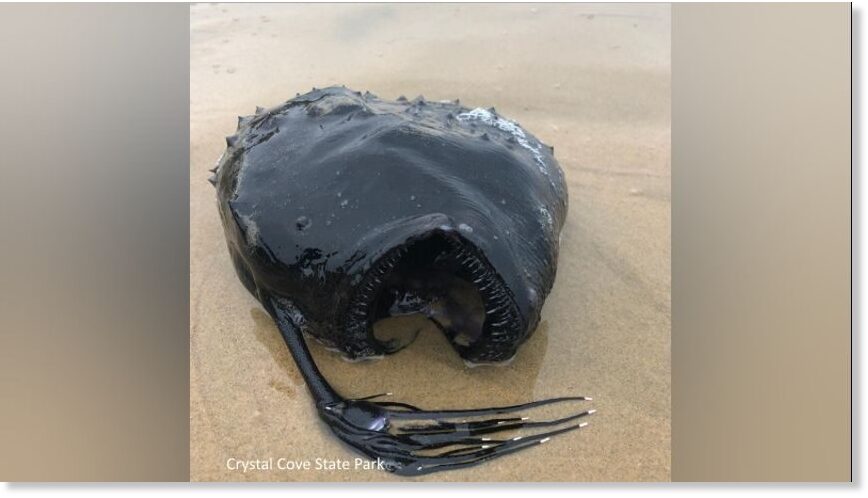

Wild!" "To see an actual angler fish intact is very rare and it is unknown how or why the fish ended up on the shore.

Males latch onto the female with their teeth and become 'sexual parasites,' eventually coalescing with the female until nothing is left of their form but their testes for reproduction. "Only females possess a long stalk on the head with bioluminescent tips used as a lure to entice prey in the darkness of waters as deep as 3,000 feet! Their teeth, like pointed shards of glass, are transparent and their large mouth is capable of sucking up and swallowing prey the size of their own body." "While females can reach lengths of 24 inches males only grow to be about an inch long and their sole purpose is to find a female and help her reproduce. There are so many fantastic aspects to this deep-sea dweller-its light organ, its diet, the spikes in its body, and the teeth! Having another in the collection is not just a boon to scientists and Pacific footballfish fans at our museum but also to fish enthusiasts around the planet.Officials with the state park described some of the fish's attributes in a Facebook post: Soon after the most recent fish find was brought into the collections room, it was thawed out and the staff started the fixation and preservation process. The only other two specimens include one collected in 1975 from Indonesia from a trawl at 2,700 feet, and another from 1971, collected from a Hawaii trawl at 2,100 feet. Todd Clardy, NHM's Ichthyology Collections Manager, said the museum has only one other anglerfish from California waters, collected in 1983. Ultimately, it is difficult to say what the function of this fluorescence is without observing it in the wild, but it may allow the anglerfish to have a more enticing and complex lure to attract prey or mates in the cold, deep depths of our world’s oceans." However, this finding suggests that it may be more common than we think, and that it simply isn’t examined because researchers assume fluorescence isn’t occurring due to the lack of light in the deep oceans. We think that the combination of bioluminescence and biofluorescence in deep-sea animals is extremely rare, as it has only been documented in a few species (one other group of deep-sea fishes that aren’t anglerfish, a jellyfish, and a siphonophore). "What seems to be occurring is that the light produced by the bioluminescent lure (which occurs due to bioluminescent bacteria) is enabling this biofluorescence. Courtesy of the Natural History Museum of L.A.

This is a notable finding because for biofluorescence to occur, there needs to be a source of light, which is completely absent in the deep sea." "From this specimen, we have the first documentation of biofluorescence in a deep-sea anglerfish, which will be published in the Journal of Fish Biology. We feel very fortunate to add her to our collection!" Strangely, this specimen was found washed up on a beach in pristine condition. Like all anglerfish, she has a bioluminescent lure (technical term an esca) that is used to attract prey in the pitch-black habitat where she lives between 1,000 and 4,000 feet deep. We know that this specimen is a female due to her size and shape, as males don’t ever get close to this size, and while males of other anglerfish families are known to be parasites that latch onto females, that has never been observed in this family. "This is a Pacific Footballfish ( Himantolophus sagamius), and she is quite large at about a foot in length. William Ludt of the extra large anglerfish found on the sand at Crystal Cove State Beach in Newport Beach. "It's one of only about 30 adult female specimens of this species, and having one washed up in this condition is extraordinary," said NHM’s Ichthyology Curator Dr. It was a thrilling day for the scientists (and a wide array of fish fans) in the Ichthyology Department in late May when a very rare specimen made its home at the museum.


 0 kommentar(er)
0 kommentar(er)
